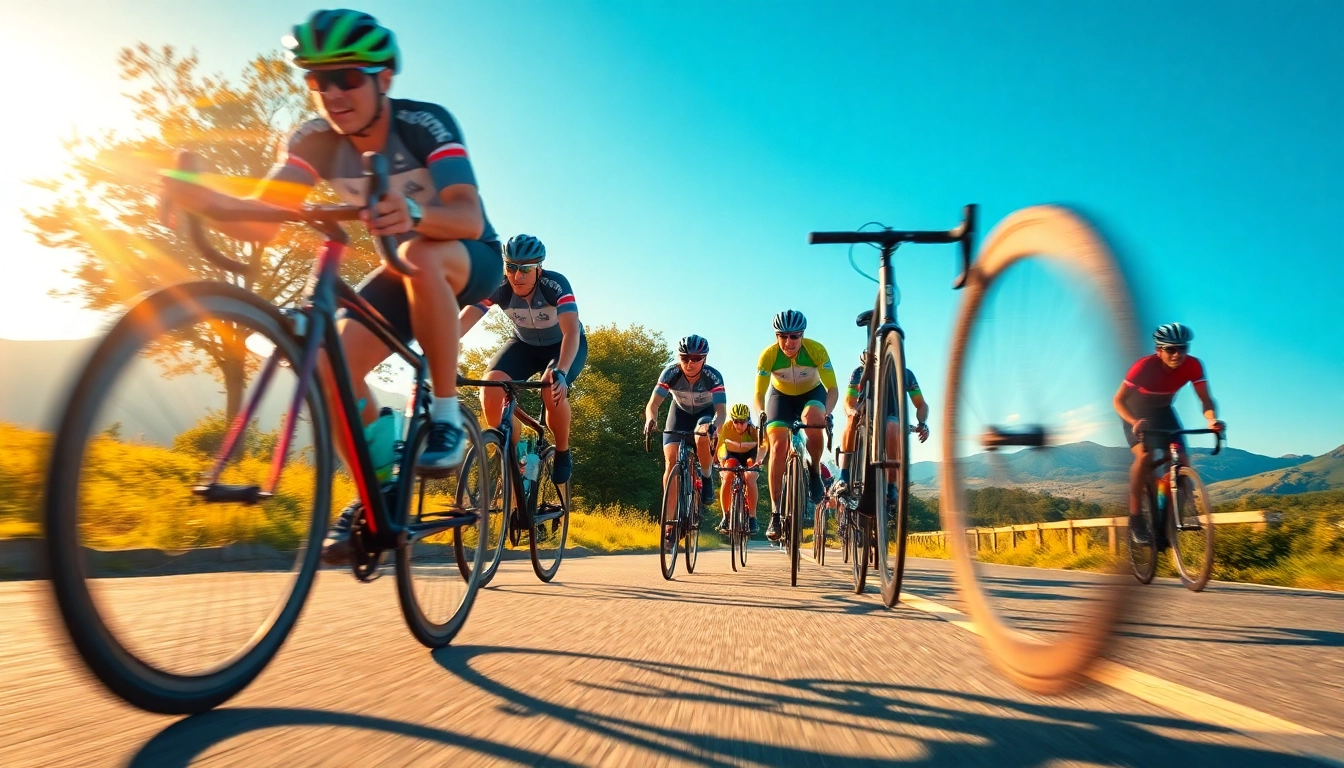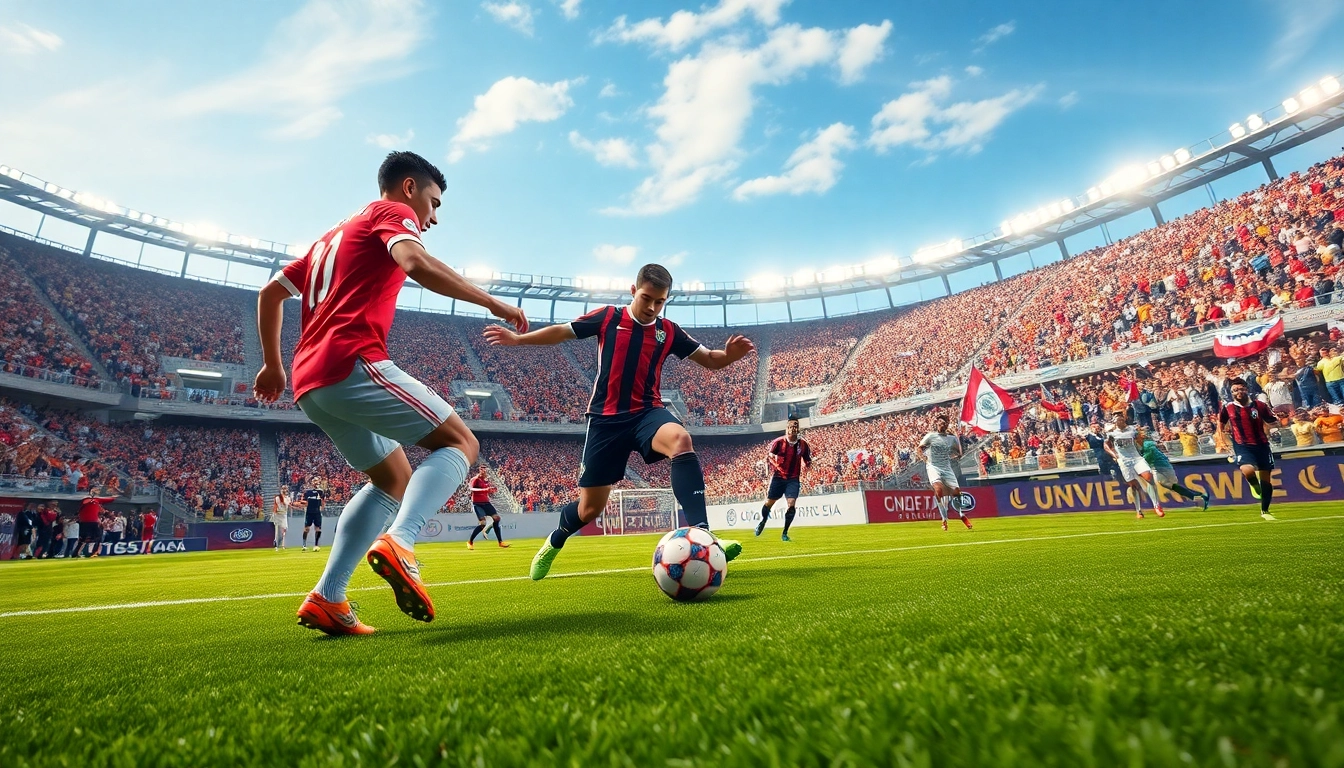Understanding Cycling Basics
What is Cycling?
Cycling, also known as bicycling or biking, refers to the activity of riding a bicycle or similar human-powered vehicle. This mode of transport has evolved over centuries, transitioning from utilitarian to recreational and competitive usage. Today, cycling is recognized not only for its practicality but also for its potential health benefits, environmental advantages, and thrilling experience it provides to cyclists of all ages. For those seeking to delve deeper into the world of cycling, understanding the fundamentals is essential.
Essential Gear for Cycling
To enjoy cycling to its fullest, investing in the right gear is crucial. Here’s a rundown of essential equipment you should consider:
- Bicycle: Depending on your style — road, mountain, or hybrid — choose a bike that fits your purposes.
- Helmet: A properly fitted helmet is non-negotiable for safety.
- Clothing: Wear moisture-wicking clothes and padded shorts for comfort during long rides.
- Footwear: Cycling shoes that clip into pedals provide better performance and efficiency.
- Accessories: Items like gloves, sunglasses, and reflectors enhance safety and comfort.
- Pump and Repair Kit: Flat tires can occur, so being prepared with tools and a pump can save the day.
Types of Cycling: Explore Your Options
Cycling can be categorized into various types, each catering to different interests and skill levels:
- Road Cycling: Ideal for those looking to travel on paved roads at speed.
- Mountain Biking: For adventure seekers who love rough terrains and challenging trails.
- Touring: A mix of cycling and travel, where riders venture long distances, often carrying gear.
- BMX: Short for Bicycle Motocross, this often involves racing on dirt tracks and performing tricks.
- Track Cycling: Done on specially built tracks, where cyclists compete for speed.
- Cyclocross: A mix of road and mountain biking, typically held on mixed surfaces with obstacles.
Health Benefits of Cycling
The Physical Benefits of Regular Cycling
Cycling regularly offers an array of physical health benefits. Here’s a closer look:
- Increased Cardiovascular Fitness: Cycling gets your heart pumping, enhancing your overall cardiovascular health.
- Muscle Strength: Engaging different muscle groups, cycling improves muscle tone, especially in the legs.
- Weight Management: Being a low-impact exercise, it aids in burning calories, aiding weight maintenance or loss.
- Improved Joint Flexibility: Since cycling is low-impact, it helps maintain joint health while minimizing stress.
Mental Health and Cycling
Aside from physical health, cycling significantly contributes to mental well-being:
- Stress Reduction: Just 30 minutes of cycling can produce feelings of relaxation as it decreases stress hormones.
- Boosts Mood: Exercise releases endorphins, known as the “feel good” hormones, enhancing overall moods.
- Improved Focus: Regular cycling can help improve cognitive function and concentration levels.
- Social Connections: Group rides create social interactions, which can contribute to a sense of belonging and community.
How Cycling Boosts Your Immune System
Engaging in regular cycling helps enhance your immune function. Here’s how:
- Moderate Exercise: Studies suggest that moderate exercise like cycling can increase immune function.
- Better Circulation: Increased heart rate and blood flow help circulate immune cells throughout the body.
- Healthy Lifestyle: Those who cycle often tend to maintain other healthy habits, supporting overall immune health.
Improving Your Cycling Skills
Technique Tips for New Cyclists
Here are essential techniques new cyclists should focus on:
- Proper Posture: Keep a flat back, elbows slightly bent, and wrists relaxed to avoid strain.
- Pedaling Technique: Aim for a consistent pedal stroke; practice circular pedaling rather than simply pushing down.
- Braking: Learn to use both brakes effectively and avoid sudden stops to maintain control.
- Shifting Gears: Familiarize yourself with your gear system to navigate different terrains with ease.
Advanced Techniques for Competitive Cycling
For those seeking to enhance competitive skills, consider these strategies:
- Interval Training: Incorporate high-intensity intervals into your rides for improved speed and endurance.
- Focus on Cadence: Measure and work on maintaining optimal pedaling cadence to enhance performance.
- Group Riding Skills: Understanding how to ride closely with others can help improve aerodynamic efficiency.
- Recovery Strategies: Implement effective recovery techniques to maximize performance over time.
Common Cycling Mistakes and How to Avoid Them
Being aware of common cycling mistakes can help riders improve their skills:
- Neglecting Bike Maintenance: Regular checks, such as tire pressure and brakes, prevent malfunctions.
- Poor Hydration: Always drink plenty, as dehydration can significantly affect performance.
- Improper Nutrition: Failing to fuel adequately can lead to fatigue; balance carbohydrates, proteins, and fats in your diet.
- Ignoring Safety Gear: Always wear a helmet and reflective gear, especially when riding at night.
Cycling Nutrition: Fueling Your Ride
Pre-Ride Nutrition Essentials
Nutrition can significantly impact your cycling performance. Here are essential pre-ride tips:
- Timing: Consume a balanced meal rich in carbs and moderate protein about 2-3 hours before your ride.
- Snacking Before Rides: Consider a light snack, like a banana or a granola bar, closer to your ride time.
- Hydration: Drink water regularly leading up to your ride to ensure you start hydrated.
Hydration Strategies for Cyclists
Proper hydration is crucial for endurance and performance:
- Fluid Intake: Identify your personalized hydration needs, which can vary by individual and climate.
- Sports Drinks: Consider electrolyte-rich beverages for long rides to replenish lost salts and minerals.
- Regular Sips: Drink small sips frequently rather than chugging large quantities at once to aid absorption.
Post-Ride Recovery Meals
After a challenging ride, focus on recovery nutrition:
- Protein and Carbohydrates: A combination helps rebuild exhausted muscles; consider a protein shake or Greek yogurt with fruit.
- Hydration: Replenish fluids immediately after finishing your ride.
- Timing Matters: Eat your recovery meal within 30 to 60 minutes post-ride to maximize muscle repair.
Cycling Safety and Etiquette
Essential Safety Gear for Riding
Your safety on the road is paramount. Equip yourself accordingly:
- Helmet: Always wear a certified helmet to protect against head injuries.
- Reflective Clothing: Wear bright and reflective gear to increase visibility, especially in low light.
- Lights: Front and rear lights are necessary for safe riding at night or during low light conditions.
Understanding Cycling Laws
Familiarizing yourself with local cycling laws is vital for your safety and that of others:
- Road Rules: Cyclists often have to follow the same traffic signals and rules as vehicles; obey stop signs and traffic lights.
- Bike Lanes: Use designated bike lanes where available — it’s safer and often legally required.
- Sidewalk Riding: Check local laws as sidewalk riding may be prohibited in certain areas, especially in urban settings.
Etiquette on Shared Paths
When riding in shared spaces, being considerate enhances everyone’s experience:
- Announce Your Presence: Use a bell or verbally notify others when overtaking.
- Stay to the Right: Keep to the right side of paths, allowing others to pass safely.
- Keep Your Pace: Maintain a predictable pace, especially around children and pets.
- Be Mindful: Look ahead to avoid obstacles and maintain awareness of your surroundings.



